May 8, 2018
2-Day Travel Guide to River Gauja National Park, Latvia
Architecture, Earth Science, Hiking, History, Natural park
Top attractions:
Gauja National Park
Up in the north of Latvia hides probably the most beautiful park in the Baltic states. It is famous for its picturesque views, a variety of landforms, great biological diversity, sandstone exposures, old castles and other historical monuments. Founded in 1973 it is the first national park in the territory of Latvia of that time. In 2004 it was added to Natura 2000 – European Union network of specially protected areas for conservation of nature diversity. The most popular archeological objects in Gauja National park is Gutmanis Cave, Erglu cliffs, Zvartes rock and Sietiniezis rock.

Erglu Cliffs in Gauja National Park, Latvia. Photo by Alis Monte [CC BY-SA 4.0], via Connecting the Dots
River Gauja
River Gauja is the most beautiful river in Vidzeme region and the whole of Latvia. It is 460 km long and a bit less than a quarter of it is in Gauja National Park. River Gauja reaches its maximum depth at 85 m near Sigulda city. It started to form in the Devonian period 370-380 m. years ago, which makes it older than dinosaurs. It is when all of the picturesque sandstone layers of River Gauja and its tributaries formed. Its current look formed 12-13,000 years ago when glaciers withdrew.

Gauja National Cave from the Bird’s Llight. Photo by Alis Monte [CC BY-SA 4.0], via Connecting the Dots
In ancient times River Gauja was a trading waterway between Livonian and Latgallian lands. At least 18 ancient fort hills, many burial fields, and settlements is a proof about the density of the past population on banks of River Gauja. In ancient times word “gauja” in Latvian meant a large amount, so River Gauja means basically large river. These days in both surviving Baltic languages this word means something more like a gang or a pack.
Gauja National Park Details
- Location: Latvia
- Region: Vidzeme (eng Middle-earth)
- Established: 1973
- Area: 917.86 km² / 354.39 mi²
- Coordinates: 57°25′0″ N, 25°25′0″ E
- Biggest city: Cēsis (14,960)
- Good accomondation: Sigulda & Cēsis
- Weather: Cēsis forecast
Alternative Gauja Tours
In case you don’t want to micro-organize everything yourself, or simply don’t have a car or license to explore Gauja National Park, there are some guided tours to the area.
- From Riga: Full-Day Scenic Gauja River Valley Kayaking Trip (8h | € 200/person) The price includes pick-up from your hotel.
- From Riga: Discover Best of Sigulda and Gauja National Park in One Day (8h | € 155/person) The price includes pick-up from your hotel.
First half of the day 1: Exploring eastern part of Gauja National Park
One of the possible destinations is a small town Liepa in the eastern part of the park. Right here in the town you can find Liella Ellite, do a 9km hike to Licu-Langu cliffs and if it’s not enough to visit Sietniezis rock up in the north.

Licu Langu cliffs in Gauja National Park, Latvia. Photo by Alis Monte [CC BY-SA 4.0], via Connecting the Dots
Licu – Langu Cliffs Hiking track
This hiking track starts in Liepa town near Liela Ellite and leads you through Lode Clay-pit to Licu-Langu Cliffs located in the middle of the forest. With a distance of 9 km it is accessible for most of the people, just be prepared for a few steep slopes. There is a total of 8 big springs in the Licu-Langu Cliffs, as well as 9 caves and alcoves. If you want to enter the caves it is recommended to do it with a guide.
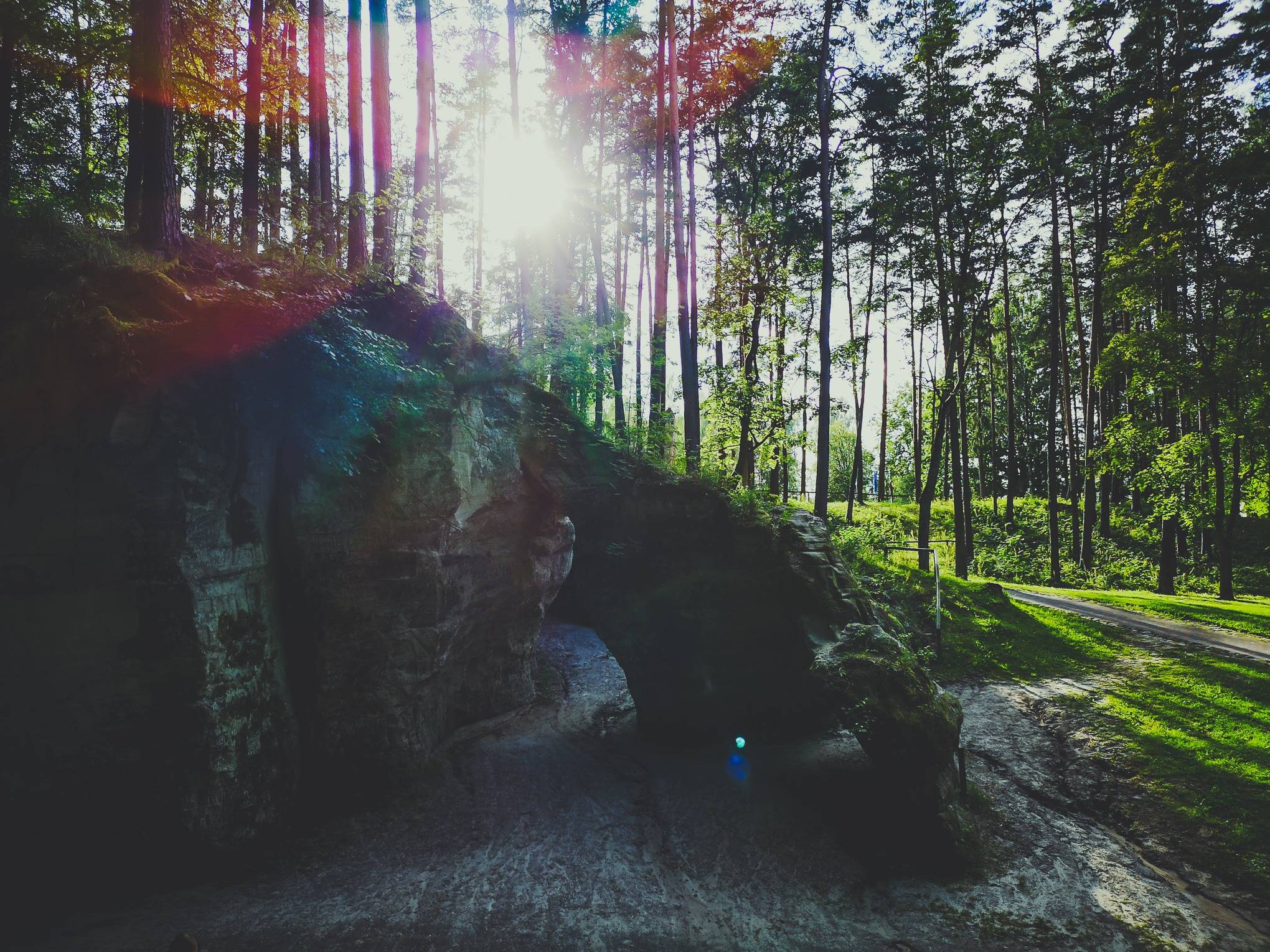
Liela Ellite Cave in gauja National Park during a sunset. Photo by Alis Monte [CC BY-SA 4.0], via Connecting the Dots
Liela Ellite
Liella Ellite – Great Hellhole is an ancient cult site and one of the oldest tourist destinations in Latvia. Emerged as a result of rock mechanical erosion and is formed from a slightly tinted sandstone. It boasts 3 big arches that remained from much larger cave holes and has a spring flowing from it. First mentioned in 1791 and is speculated to be more than 7,000 years old.
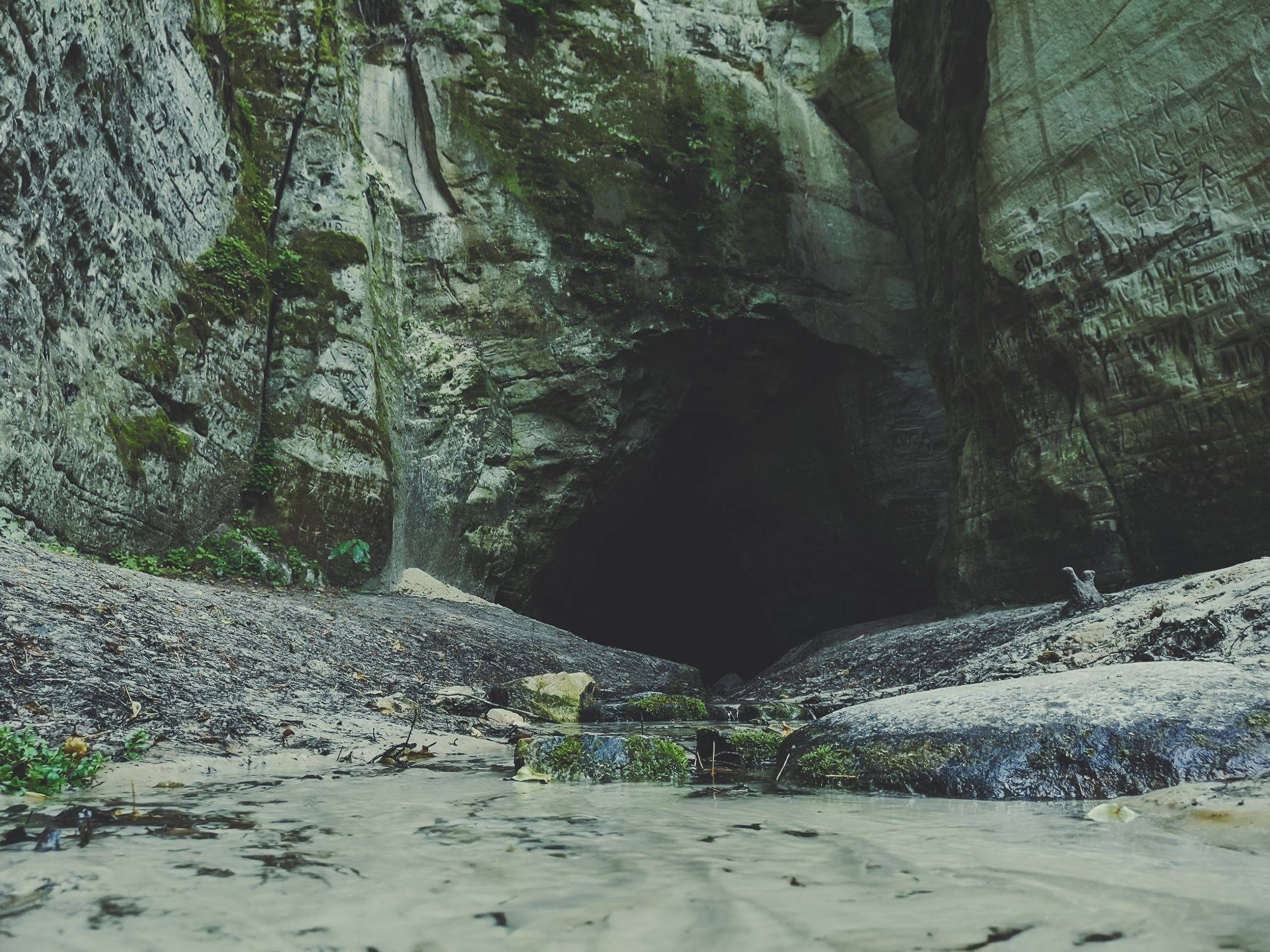
Liela Ellite Cave in Liepa, Gauja National Park during a sunset. Photo by Alis Monte [CC BY-SA 4.0], via Connecting the Dots
Devil’s Gate, or Hell’s Sinkhole, supposedly is an an ancient sanctuary for a cult. Having in mind that local Baltic pagans were occupied by Christian Crusaders for centuries, I doubt that the devil was worshiped here.
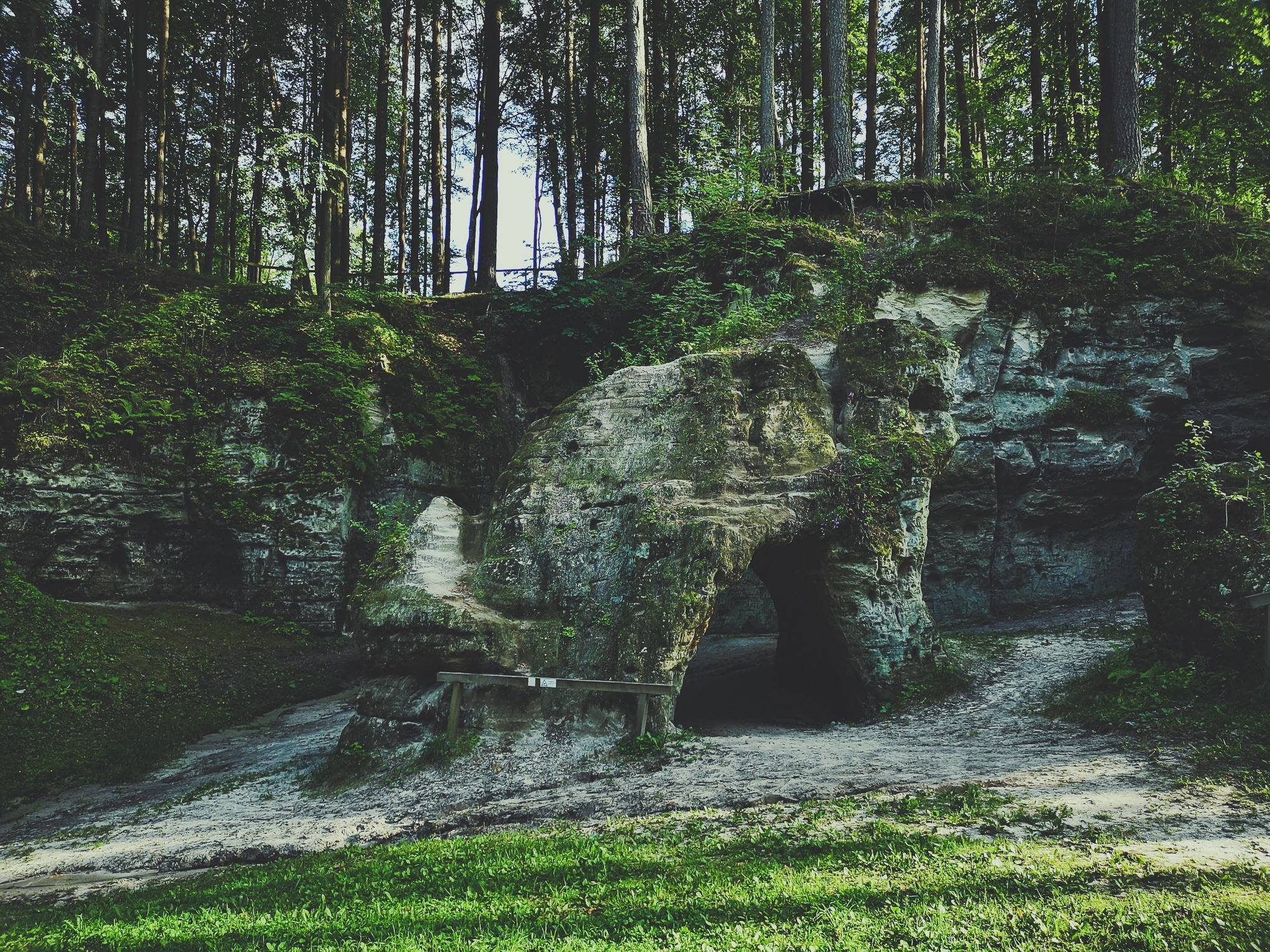
Liela Ellite Cave from afar in Liepa, Gauja National Park during a sunset. Photo by Alis Monte [CC BY-SA 4.0], via Connecting the Dots

Lode Clay Pit in Gauja National Park, Latvia. Photo by Alis Monte [CC BY-SA 4.0], via Connecting the Dots
Lode Clay-pit
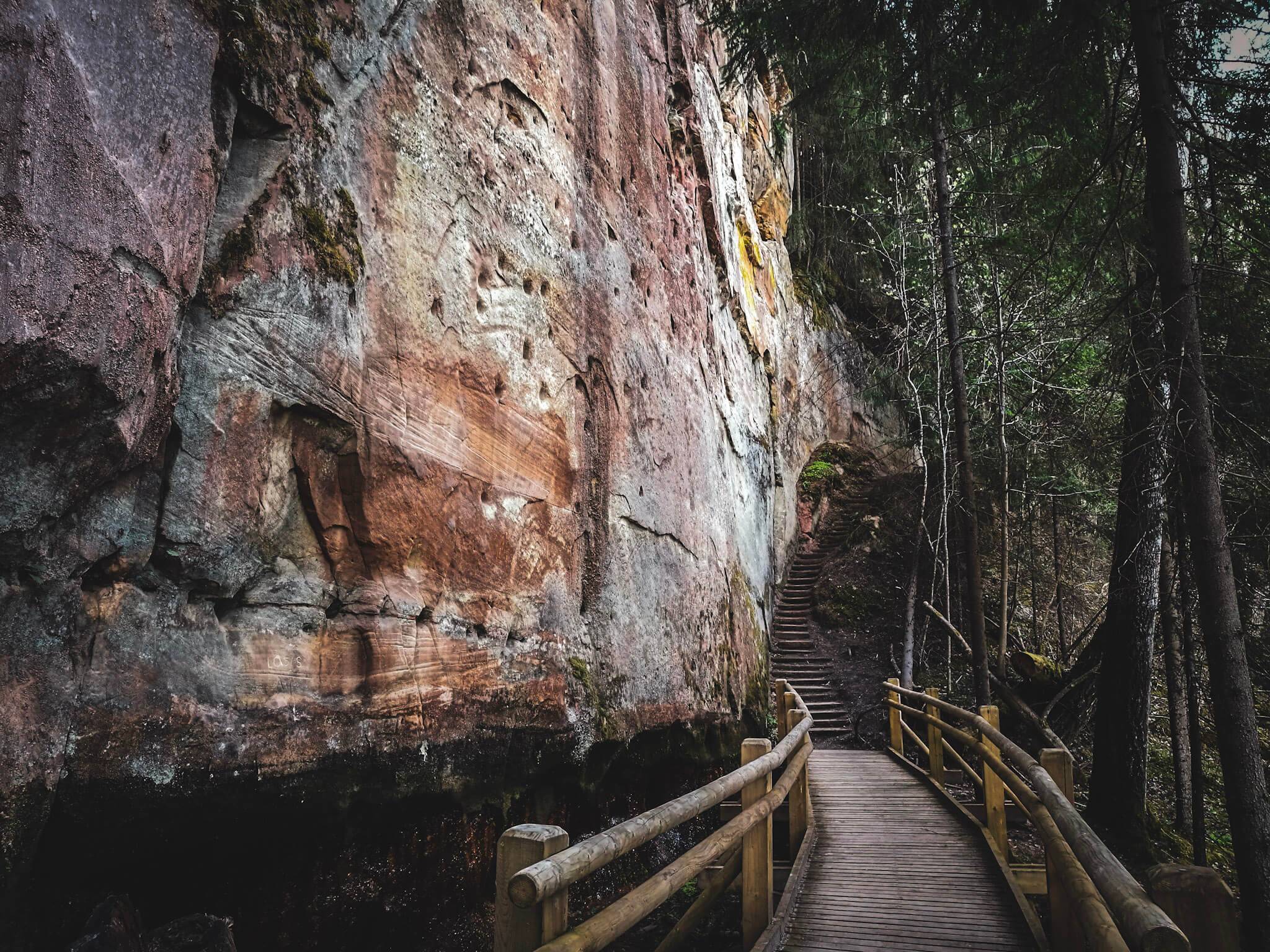
Licu Cliffs in Gauja National Park, Latvia. Photo by Alis Monte [CC BY-SA 4.0], via Connecting the Dots
It is located between small town Liepa and the primeval valley of River Gauja. Disscovered in 1953 by a local geologist J. Slienis and became famous in 1970 when another geologist V.Kuršs for the first time in the world discovered a well preserved fossils of Upper Devonian armored fish and Strunius kurshi fish. These days the clay-pit is used by the company “Lode” which produces bricks.
Licu Cliffs
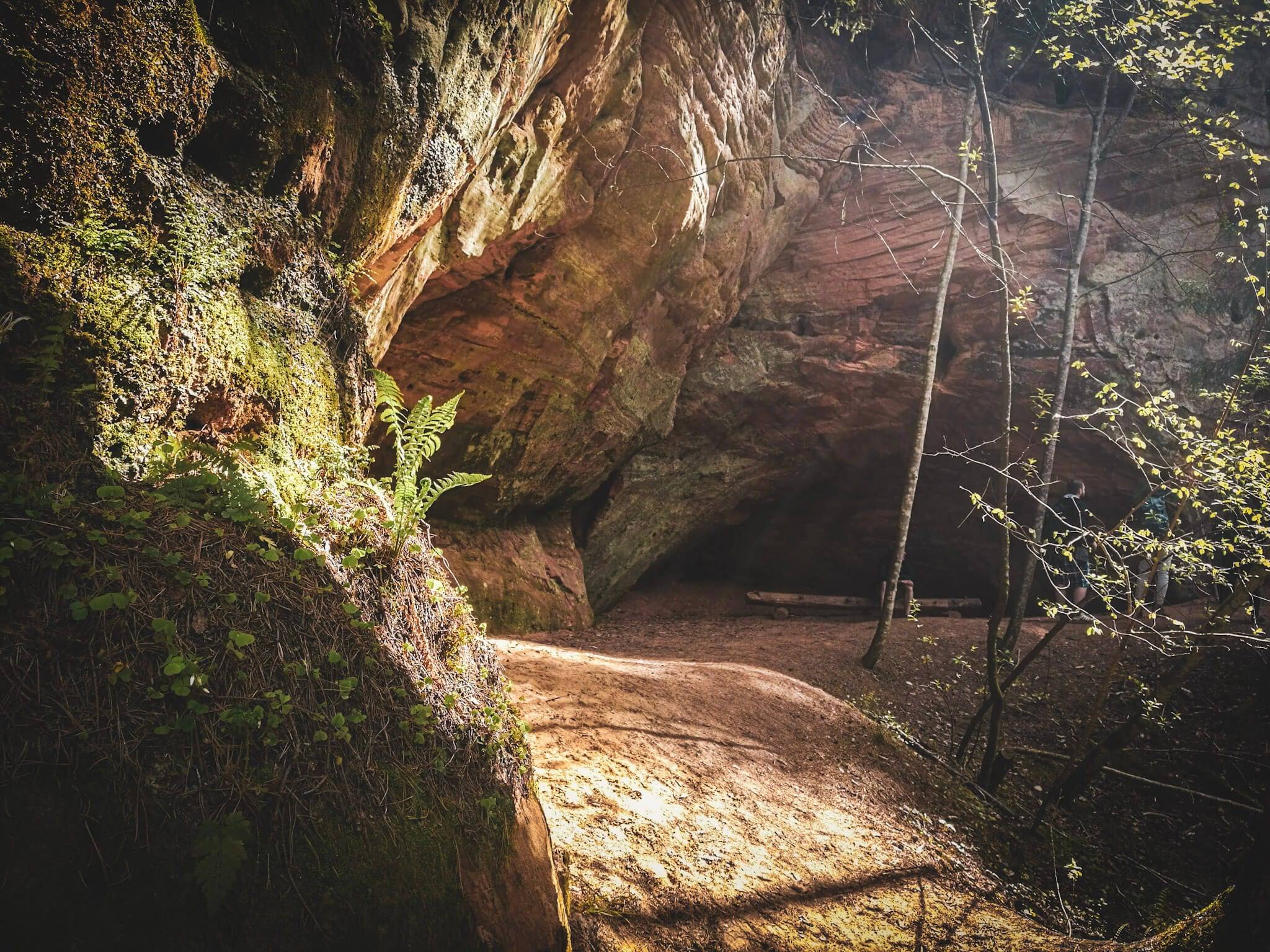
Langu Cliffs in Gauja National Park, Latvia. Photo by Alis Monte [CC BY-SA 4.0], via Connecting the Dots
Licu Cliffs are the Crown jewel of this destination for me. It is 200 m long, 30 m high cliff in the middle of a forest. At the north end of it, you can find Licu Ravine, several meters wide, up to 7,5 m deep and 20 m long, with a cave (9 m deep) at the end of it. This complex was formed by a spring that flows next to the cave and forms a stream, rushing down toward the River Gauja.
Langu Cliffs
Langu cliffs is a smaller brother of Licu cliffs, nevertheless, it has a high number of caves and springs. The Langu Alcove is similar to Gutmanis Cave, it is 10 m wide, up to 3,5 high and 6 m long. The Great Langu cave is 48 m long, instead of a floor, you find yourself in a spring which reaches 4 m depth at the end of the cave, called Bezdibena avots (Bottomless Spring). Sandstone caves are unstable, and it is very dangerous to enter it, due to this reason we didn’t enter it. If you want to, do it with precaution.
At the foot of the Langu Cliffs, four powerful springs flow from the steep slope over a distance of 100 m.

Langu Cliffs in Gauja National Park, Latvia. Photo by Alis Monte [CC BY-SA 4.0], via Connecting the Dots
Second half of the day 1: Exploring central part of Gauja National Park
After completing the hike head to Erglu Cliffs which is the MUST SEE tourist destination in Gauja National Park is situated only 6 km from Cesis Castle, which is recommended to visit between visiting Erglu Cliffs and Liepa town.
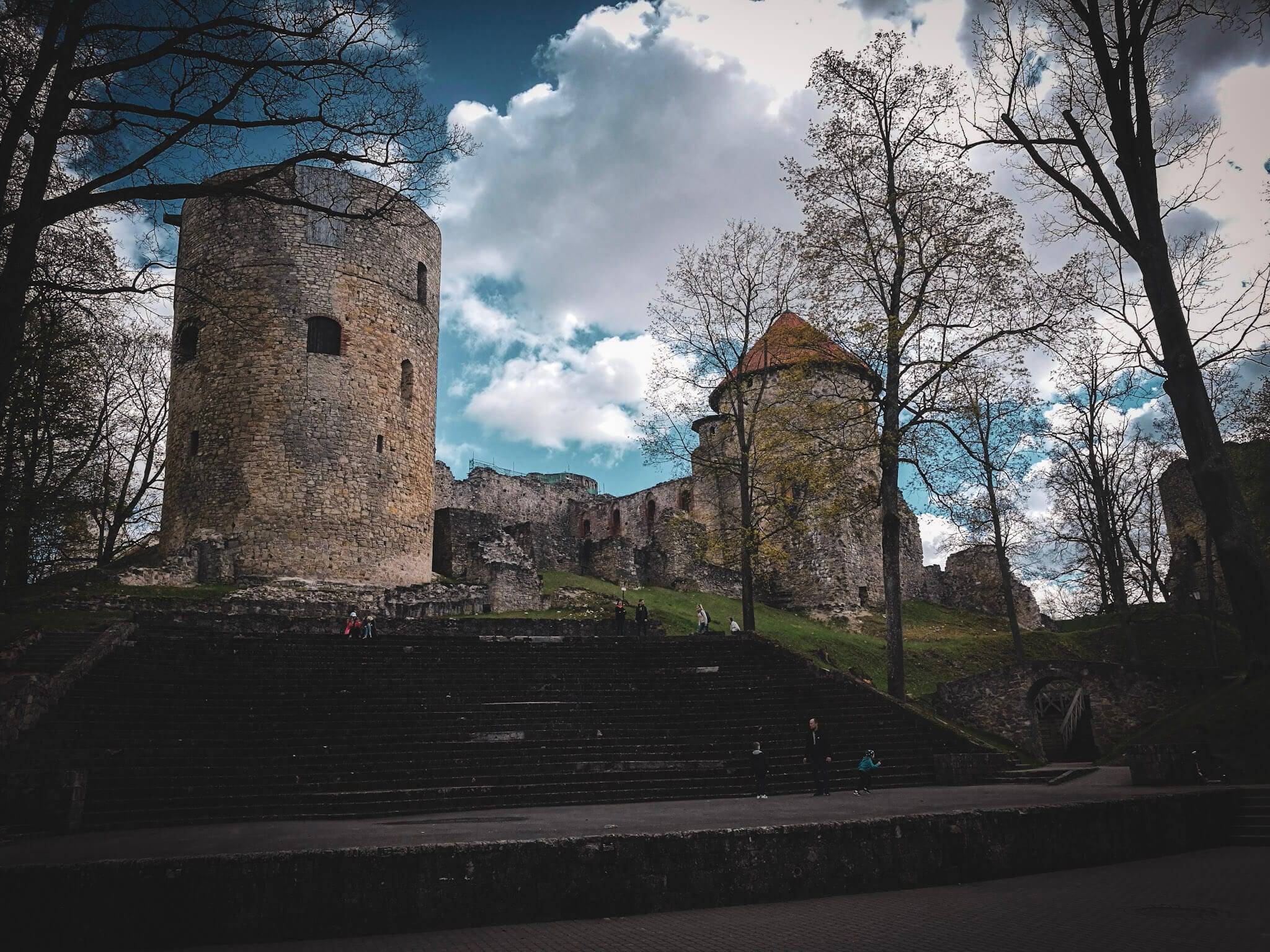
Cesis Castle in Gauja National Park, Latvia. Photo by Alis Monte [CC BY-SA 4.0], via Connecting the Dots
Cesis Castle
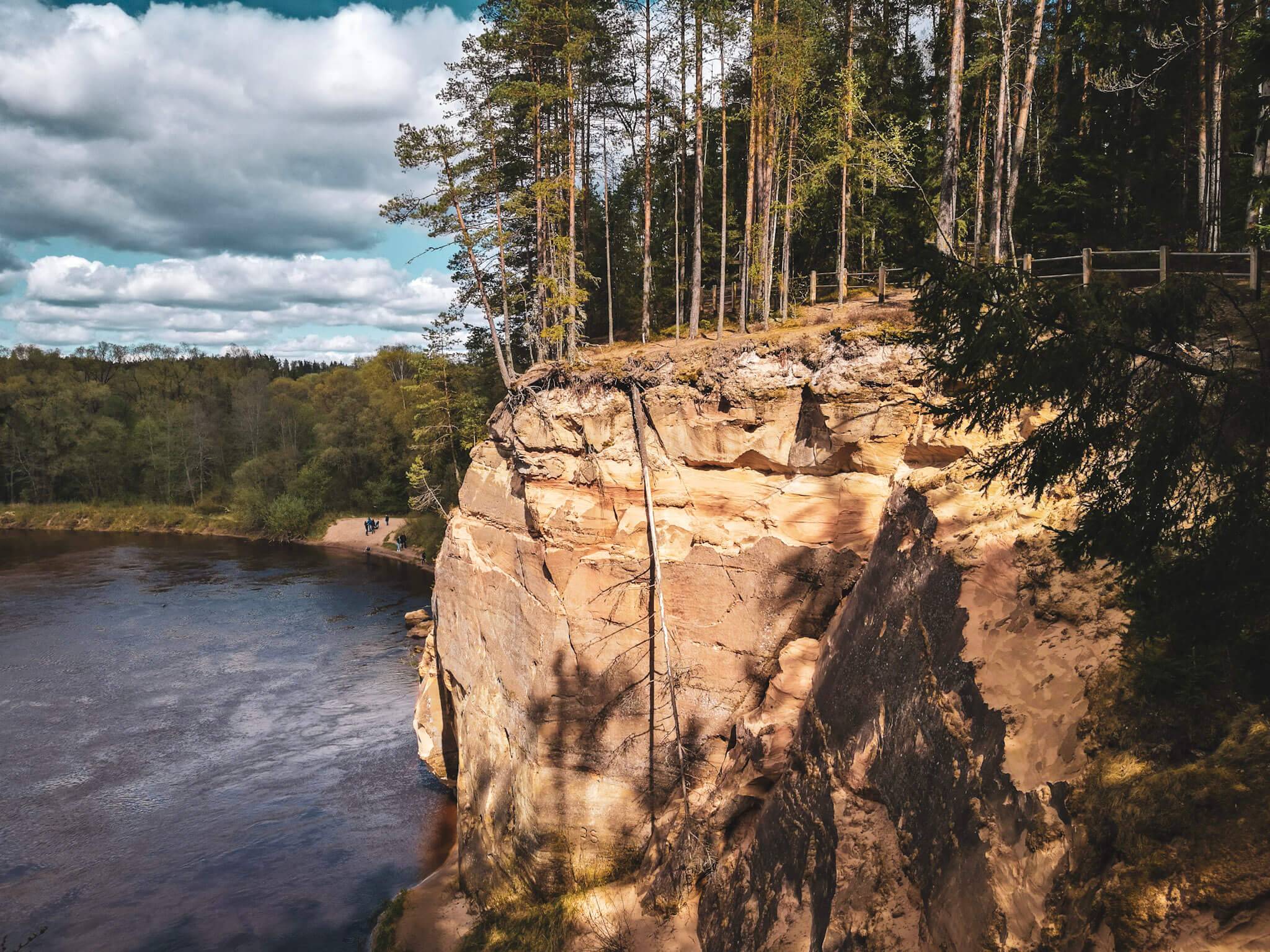
Erglu Cliffs in Gauja National Park, Latvia. Photo by Alis Monte [CC BY-SA 4.0], via Connecting the Dots
Livonian Brothers of the Sword began the construction of Cesis Castle in 1209 and it served as the residence for the Teutonic Order’s local master between 1237 and 1561. Once the most important castle of the Livonian Order, it was partly destroyed during the Great Northern War and remains not as only the most impressive ruins in whole Latvia, but one of the most impressive castles ruins in the whole Baltic states. Its working hours are 10 – 16 h and costs 6 € – adult.
Erglu cliffs
Erglu Cliffs in the terms of size are the most magnificent archeological object of the ancient valley of River Gauja. It is found only 5,5 km north of Cesis on the left bank of River Gauja for about 0,5 km with a ranging height of 18 to 26 m. Like most of the objects in the valley of River Gauja, the cliffs formed in Upper Devonian, but Erglu cliffs are unique because you can easily observe iron compound marks on layers of it. The steep and majestic cliffs are one of the most popular tourist destinations in Gauja National Park. One can observe River Gauja standing on it or descend to observe the cliffs itself. But probably you get the best view if you just rent a kayak and observe it from the river.
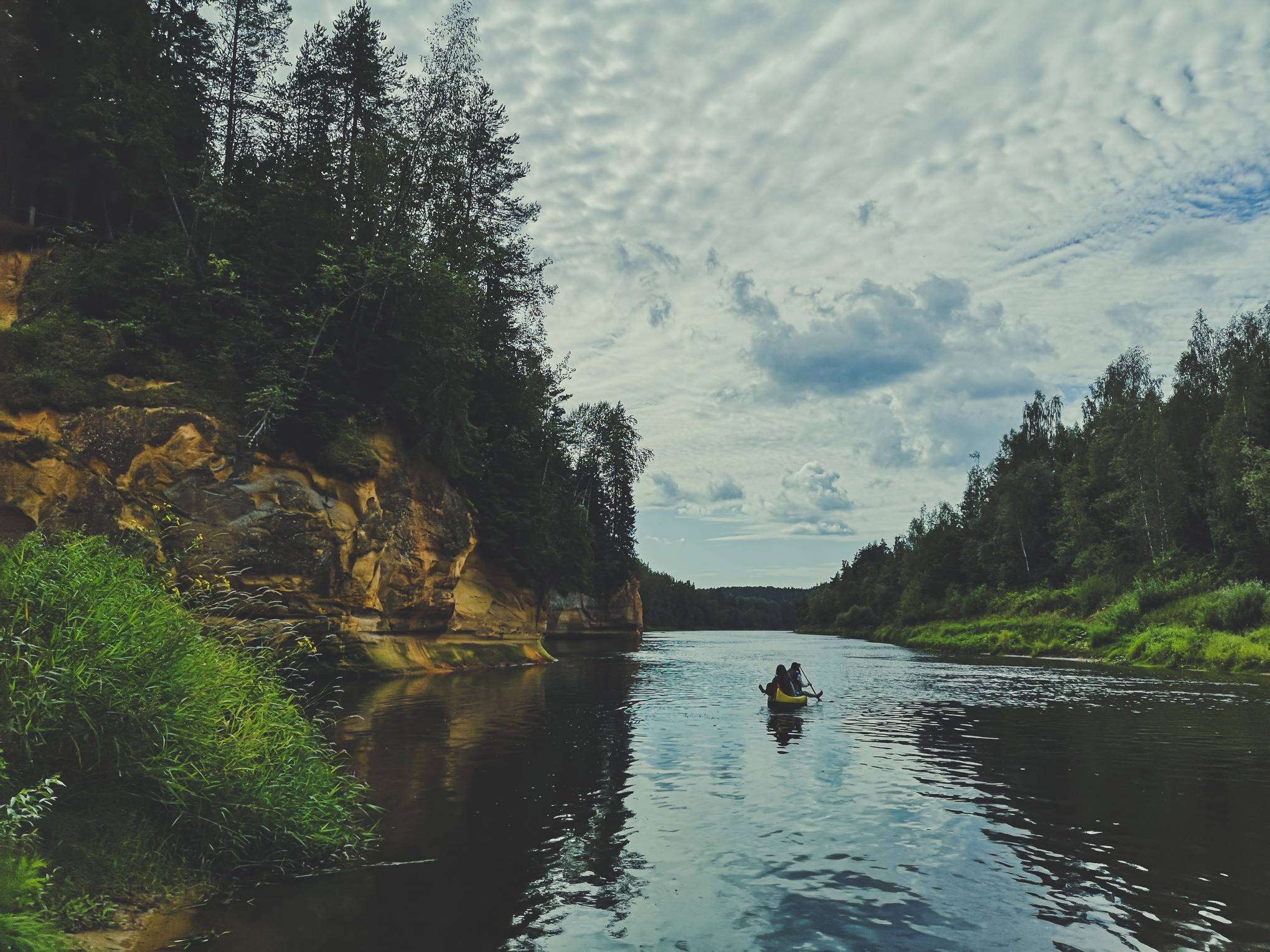
Kayaking through Erglu Cliffs in Gauja National Park, Latvia. Photo by Alis Monte [CC BY-SA 4.0], via Connecting the Dots
The legends tell that the echo against the cliffs sounded like the organ and that is the reason why they were called Erglu cliffs (Organ cliffs).

Zvartes Rock in Gauja National Park, Latvia. Photo by Alis Monte [CC BY-SA 4.0], via Connecting the Dots
Zvartes Rock
From a parking lot near Zvartes Rock head northwest through Raganu Plavina (Witches’ Meadow) and a bridge over River Amata. Your objective is to get on Zvartes krauja (Zvartes Cliff) from which you can observe not only Zvartes Rock but Witches’ Meadow, River Amata and surrounding region of Gauja National Park.

Miglas Rock in Gauja National Park, Latvia. Photo by Alis Monte [CC BY-SA 4.0], via Connecting the Dots
Miglas Iezis (Fog Rock)
On your way to Zvartes cliff on the right bank of River Amata, next to the old overgrown riverbed, stands Miglas Iezis (Fog Rock), a protected geological monument with a local importance. Zvartes Rock is one of the most popular tourist attraction points in Gauja National Park, dating as old as Upper Devonian (350 – 380 mya). Zvarted Rock is 20 m tall and according to an old legend, Zvartes rock was once a gathering place for witches. At Raganu plavina (Witches’ Meadow) you can test your agility on an interactive hiking track. At the visitor center, you can learn more about old herbalist lore, medical plants, rocks and folk tales.
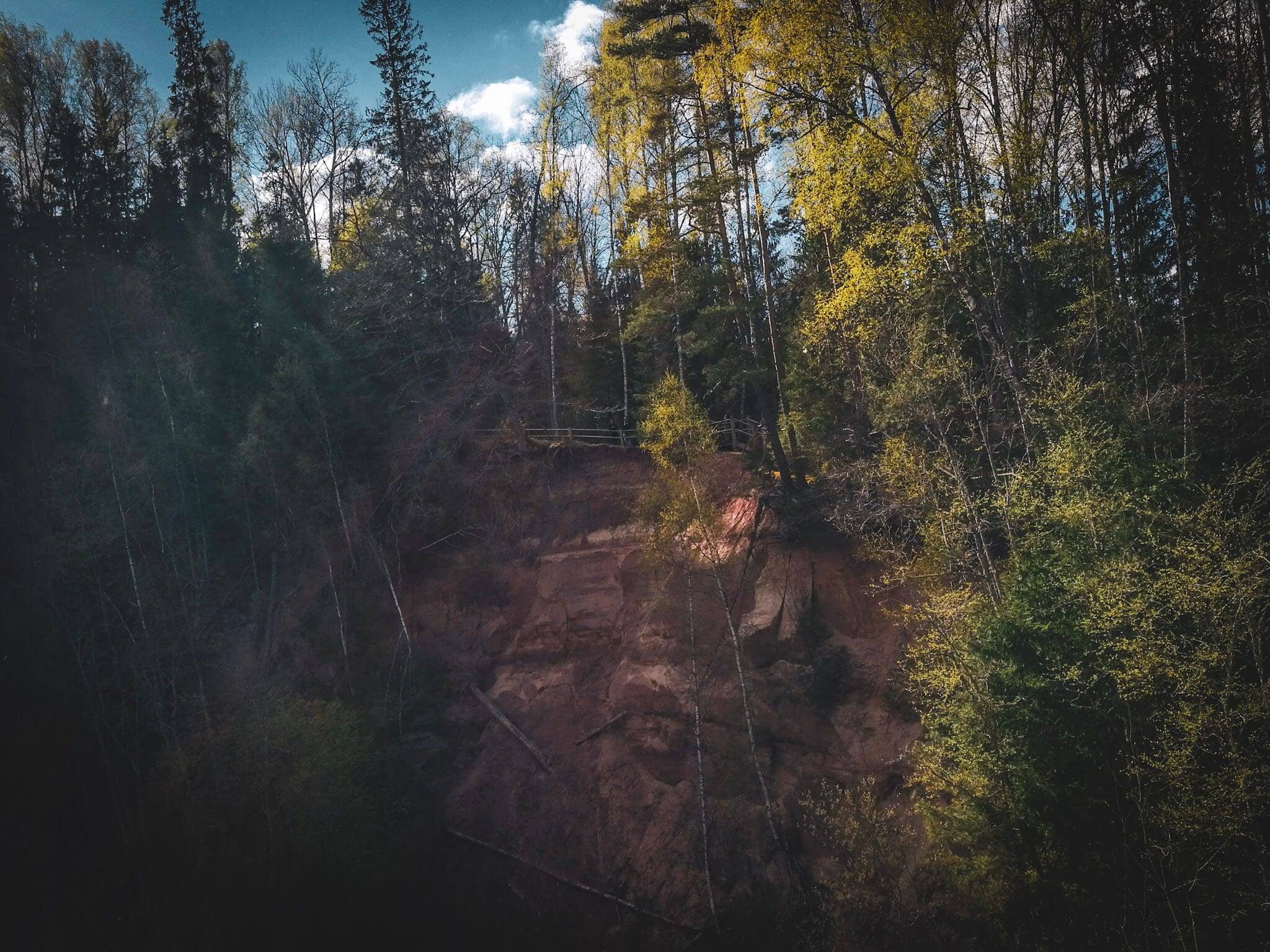
Zvartes Cliff in Gauja National Park, Latvia. Photo by Alis Monte [CC BY-SA 4.0], via Connecting the Dots
Zvartes Krauja (Zvartes Cliff)
You can find it right next to Zvartes Rock on the other side of River Amata from the parking lot. With 44 m in height and 200 m in width, it is simply impossible to miss this one. Zvartes Cliff is easily seen from parking lot itself and should be your main destination on this part of the trip. It provides you with the best view I’ve seen in this park.

Zvartes Rock in Gauja National Park, Latvia. Photo by Alis Monte [CC BY-SA 4.0], via Connecting the Dots
River Amata
River Amata is one of the swiftest tributaries of River Gauja and you can find numerous archeological objects in its valley, making it probably the most interesting river in the park beside River Gauja itself. It the short, distance from railroad Riga-Valmiera to the place where it meets River Gauja, over 20 exposures of dolomite and sandstone can be seen on the banks of River Almata. 10 of them are protected geological monuments of national importance. If you still have stamina and time for sightseeing you can do Amata Geological Trail to see the untouched nature of the valley of River Amata and even more rocks!

Araisi Lake Castle in Gauja National Park, Latvia. Photo by Alis Monte [CC BY-SA 4.0], via Connecting the Dots
Day 2: Exploring western part of Gauja National Park
A good way to start the day, if you are residing in Cesis, is to go to the Araisi lake first. It opens at 10:00 so there is no point to leaving earlier than ~ 09:40 depending on your exact location. You can find it ~8km down in the south from Cesis Castle.
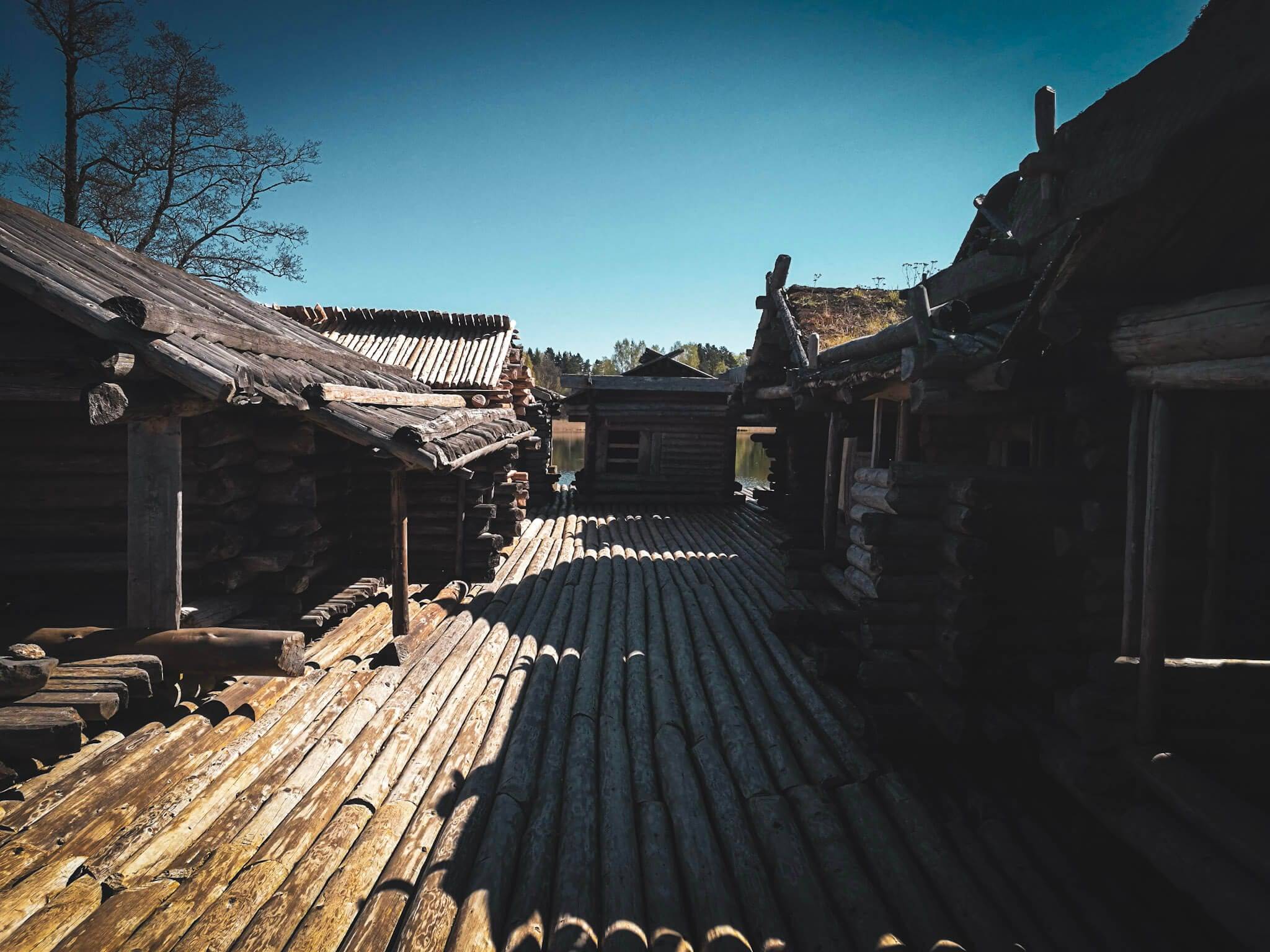
Araisi Lake Fortress in Gauja National Park, Latvia. Photo by Alis Monte [CC BY-SA 4.0], via Connecting the Dots
Araisi Lake Fortress, Araisi Castle and Stone Age Settlements
Araisi Lake Fortress is one of the ten lake fortresses in Latvia. It has been built and inhabited in 9th – 10th century by a community belonging to Latgallian tribe. The fortress was built in the lake on low, overflowing islands for defensive purposes, fortification system was similar to fortifications of fort hills. Araisi Lake Fortress is the first so extensively excavated and reconstructed lake fortress in North-eastern Europe.
Araisi Castle was built during the times of Livonian Order and inhabited in the 14th-17th century. The remains of the structures reflect the building traditions of German medieval castles, while the ornaments and agricultural implements found here indicate that a significant proportion of the castle residents belonged to the indigenous population.

Araisi Lake Stone Age Settlements in Gauja National Park, Latvia. Photo by Alis Monte [CC BY-SA 4.0], via Connecting the Dots
You can find an exposition of ancient settlements in Meitu sala (Girl’s island), southern end of the peninsula extending into Lake Araisi. While no actual Stone Age settlement sites have been discovered here, some tools from those times were found during excavation works of nearby fortress and castle. Together with a reconstruction of Stone Age house, you find buildings from Bronze, Late Iron ages and Mesolithic period, which gives you an insight o into the development of ancient dwellings. You can visit it all for 2 € – adult – between 10:00 – 16:00 h. After visiting Lake Araisi be sure to go to Zvartes Rock if you haven’t done so yet. Most people of our group were impressed by it the most.
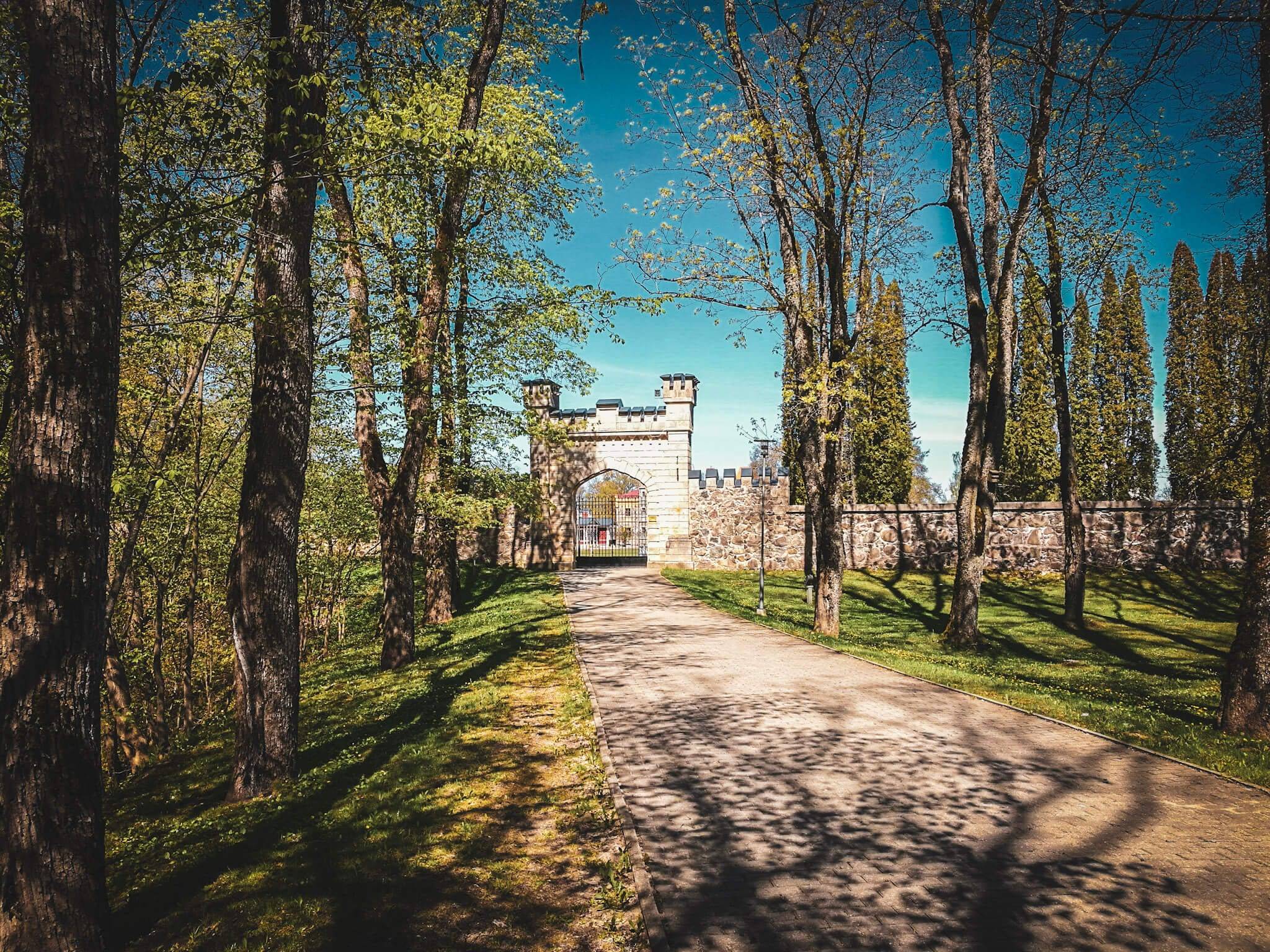
Sigulda Castle Entrance in Gauja National Park, Latvia. Photo by Alis Monte [CC BY-SA 4.0], via Connecting the Dots
Sigulda Castle
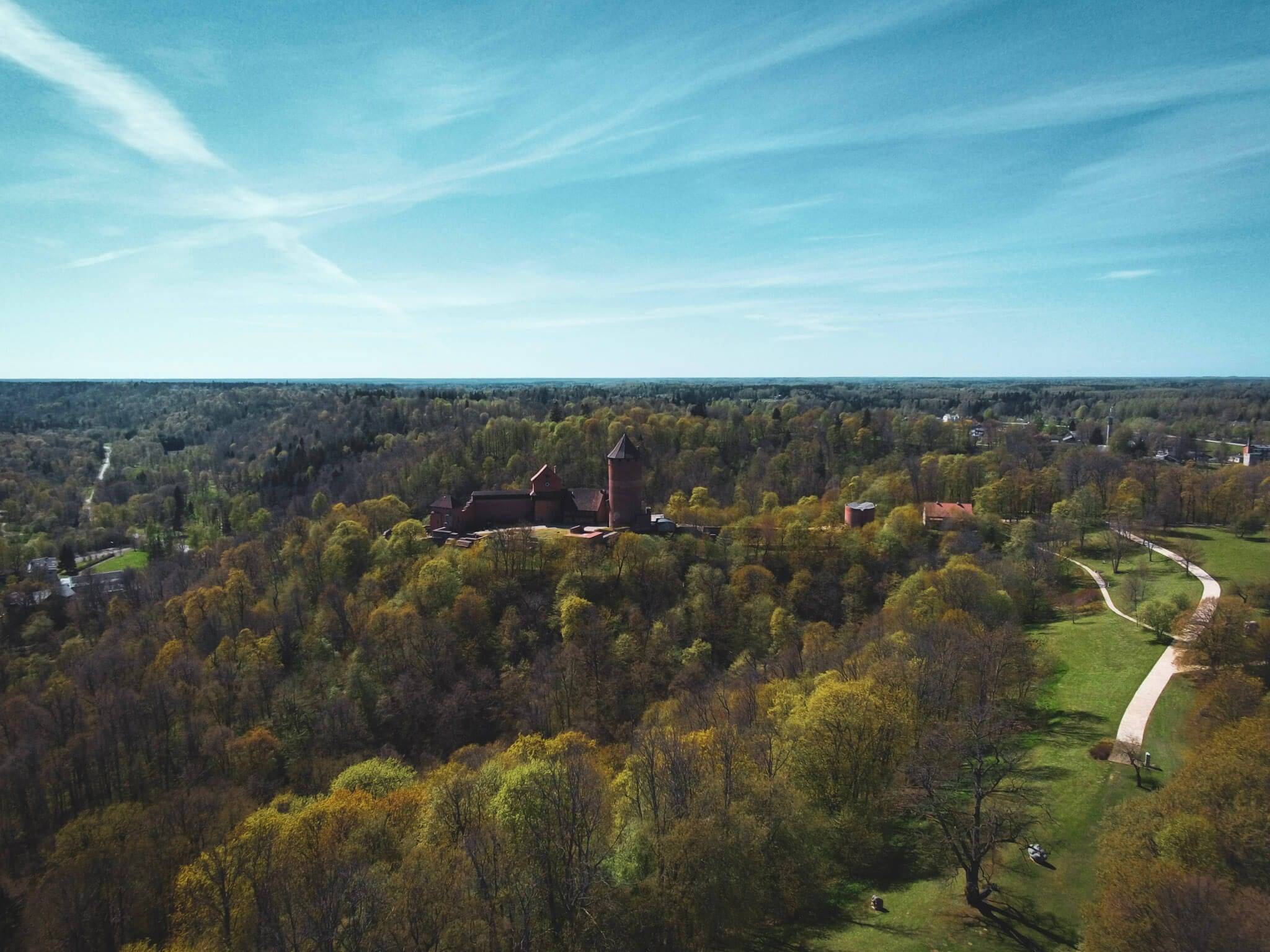
Turaida Castle from Drone in Gauja National Park, Latvia. Photo by Alis Monte [CC BY-SA 4.0], via Connecting the Dots
Almost as old as the Livonian Brothers of the Sword who built it in 1207, just 5 years after the first order formed outside the Mediterranean region. River Gauja and its tributaries was an important asset during the crusades as it was used as a waterway. Adding land roads which were already in place the region ended up not only with the biggest concentration of castles in Latvia but in whole Eastern Europe. You can visit Sigulda Castle to feel its medieval aura between 09:00 – 20:00 for 2 € – adult.
Turaida Castle
Turaida castle is an outstanding monument to medieval architecture and archeology. It was the administrative and economic center of Riga archbishopric. The construction of Turaida Castle started in 1214 and extended until the 16th century.
It is one of the most investigated Stone Castles – Fortresses in the Baltics. You can visit it together with the whole Turaida Museum Reserve complex for 6 € – Adult. Working hours: 10:00 – 17:00.
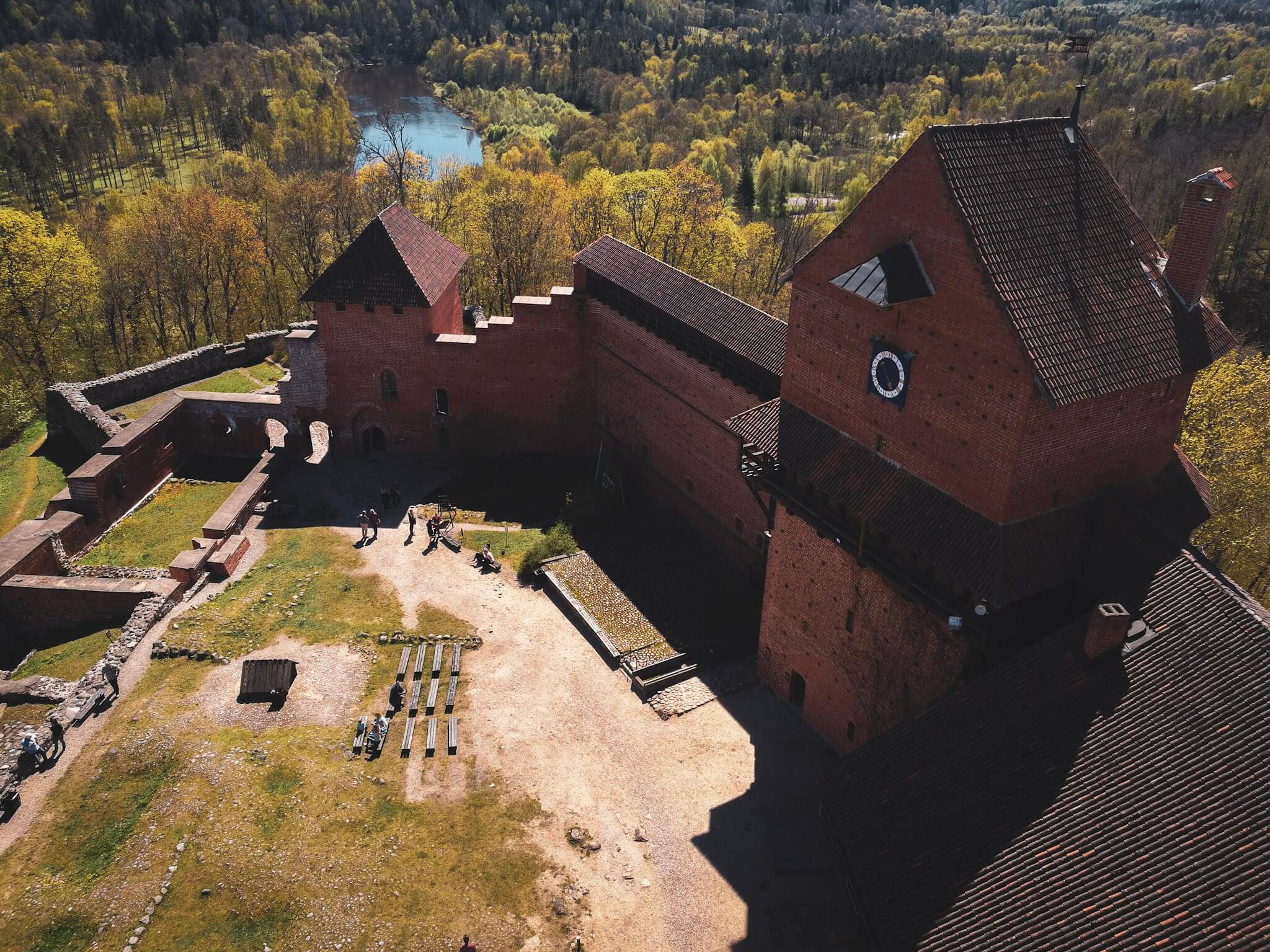
Turaida Castle from Tower in Gauja National Park, Latvia. Photo by Alis Monte [CC BY-SA 4.0], via Connecting the Dots
Up to the beginning of XX century, the ruins of Turaida Castle main Tower lasted out at the height of ~27 m. 1936 the remains of the tower were strengthened, and a sighting platform additionally built on the top of it, from which you can observe not only the whole castle but the surrounding region as well.
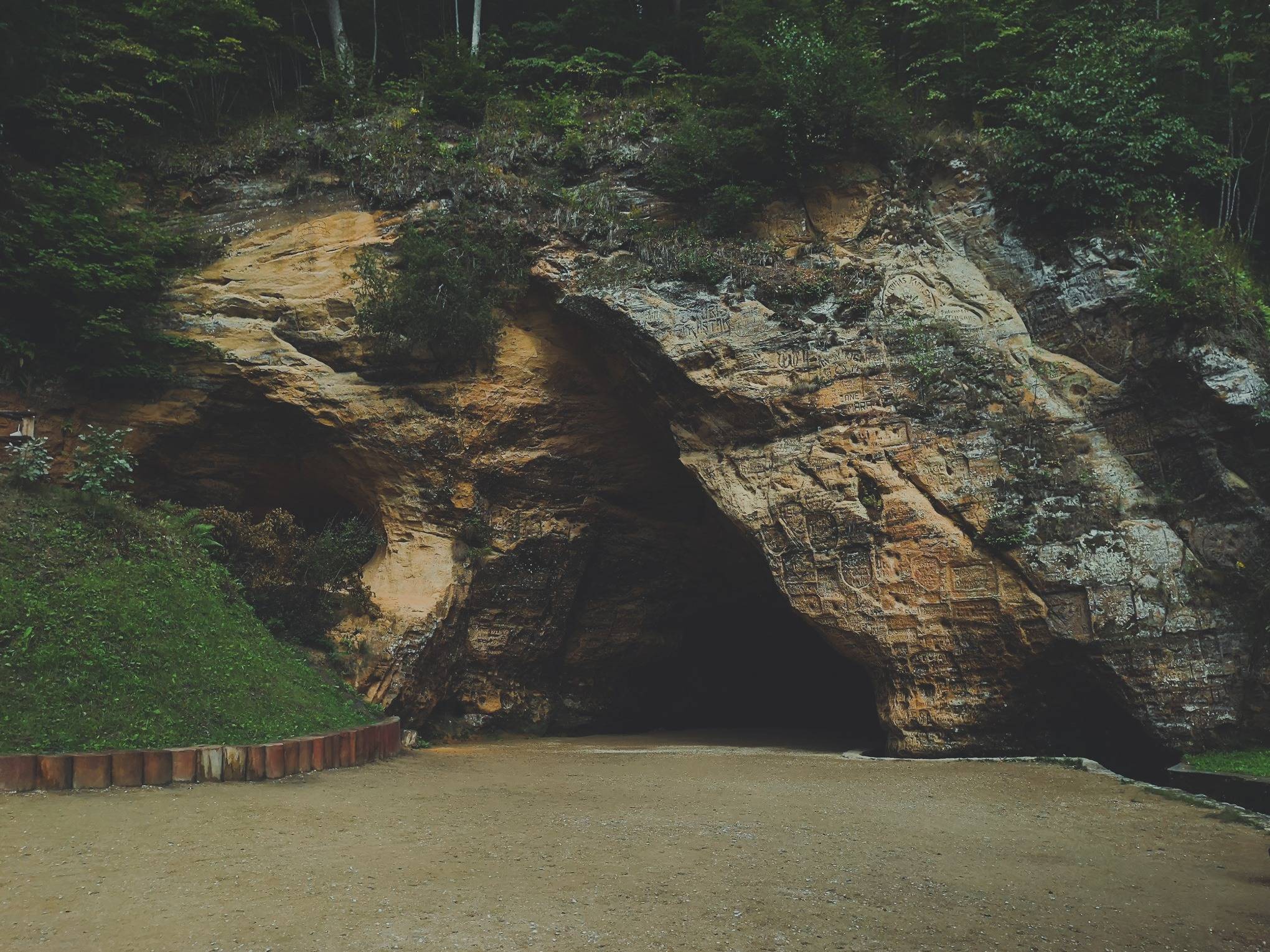
Gutmanala Cave in Gauja National Park, Latvia. Photo by Alis Monte [CC BY-SA 4.0], via Connecting the Dots
Gutmanala Ala (Good man’s cave Cave)
Gutmanala cave is the most visited, the biggest, the oldest and in various information sources, the most described cave in Latvia. An archeological monument since 1967, the cave, based on the numbers of the years inscribed in the ceiling, is the oldest tourism object in Latvia. Currently, the oldest date in the cave is from 1667. There is also information found in German literature sources that until 1812, the year numbers 1521 and 1564 have remained on the walls of the cave. Please note that it is strictly forbidden to engrave your own name in order to protect ancient inscriptions.
It is also the largest grotto in the Baltic: 10m high, 12m wide and 18.8m long. The spring that flows from the cave used to be sacred and its water – healing.
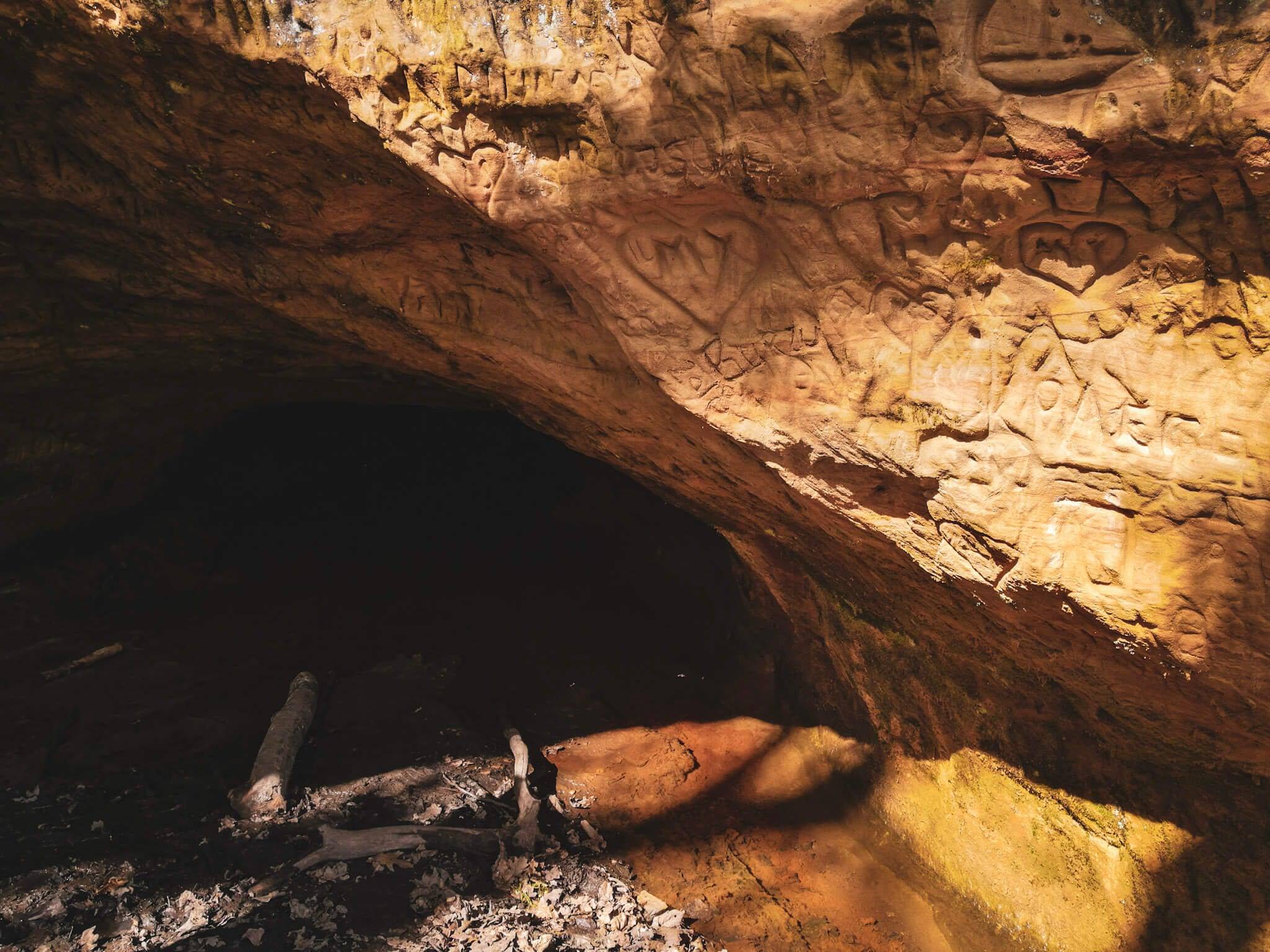
Viktor Cave in Gauja National Cave, Latvia. Photo by Alis Monte [CC BY-SA 4.0], via Connecting the Dots
The further road leads to Gutmanala Cave little neighbors: Viktor’s Cave and the small cave; hill fort of Krimulda Castle; cable cart from Krimulda to Sigulda, Krimulda Manor and Krimulda itself. If you still have some spare time you can travel further to the west to visit Velnala cave and its smaller siblings. In case you have an extra day, you should probably spend that time around Ligatne or rent a kayak and observe the park from a different angle. One way or another, if you find yourself in Baltic states, and want to see the best of nature it has to offer, Gauja National Park might be a good idea not only for tourist attractions but for active exploring as well.
Honorable Mention – Sietiniezis Rock
Though I do not include Sietniezis Rock in this 2-Day itinerary, it is well worth your time. It is only due to its location, I don’t see where to fit it. Personally, I only saw it during my second visit to Gauja National Park.

White Sietiniezis Rock in Gauja National Park, Latvia. Photo by Alis Monte [CC BY-SA 4.0], via Connecting the Dots
The legend tells that this white rock face – Sietiniezis – was left here by the Devil himself after he failed to bring it to the local manor before the first rooster crowed.
Frequently Asked Questions
Where to stay Gauja National Park?
Best places for accomondation in Gauja National Park are Cēsis and Sigulda.
Where is Gauja National Park?
Gauja National Park is located at the heart of Latvia - Vidzeme (eng the Middle-earth).
How to pronounce Gauja?
In Baltic languages "g" and "j" are soft. You can hear how it sounds in Latvian here: https://forvo.com/word/gauja/